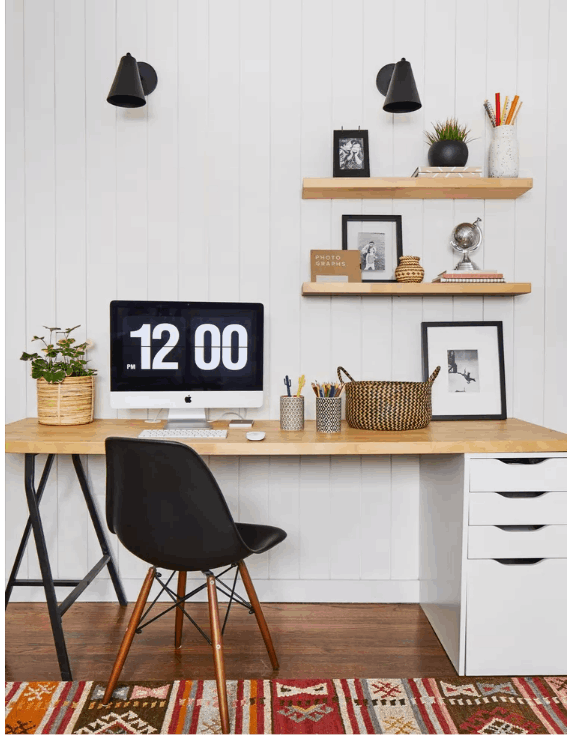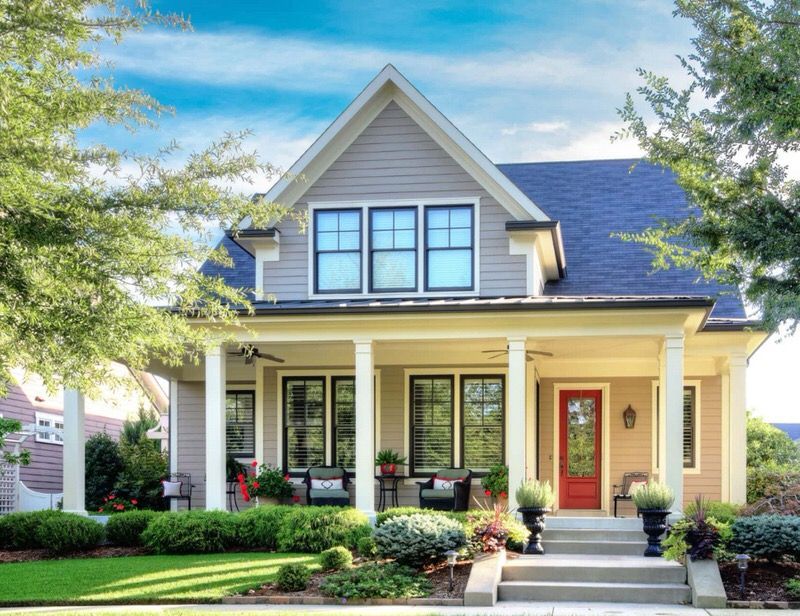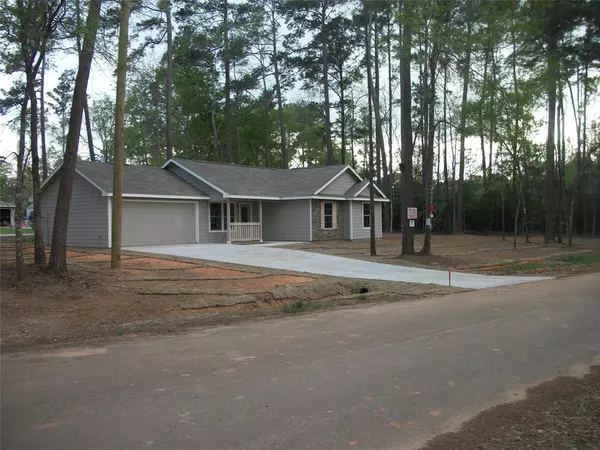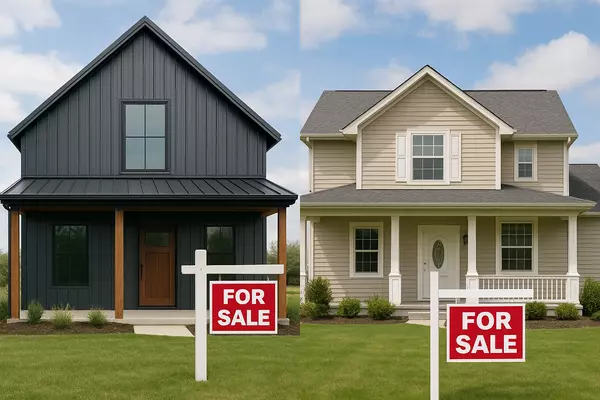Designers Revealed the Best Way to Use ChatGPT for Home Projects—So I Tried It By Andrea Beck
The bot can be a powerful tool for getting started on a home renovation, but it might not give you the full picture.
As artificial intelligence (AI) plays more of a part in our everyday lives—whether you just enjoy scrolling through memes or use it in more practical ways, like researching a product or planning your meals for the week—it's also becoming a helpful tool for redesigning and renovating your home, especially at the beginning stages.
Because figuring out ChatGPT can be a bit of a complicated process, professional designers shared how to make the most of it when creating room layouts and beyond. I even tried it out myself to determine where it's helpful—and where human touch is necessary.
How ChatGPT Can Help with Home Renovation Projects
When you’re feeding information about your home to ChatGPT, it’s designed to analyze and generate text and images, so you’ll get more customized results than with a simple web search. For example, you can ask ChatGPT for paint recommendations by describing or uploading a picture of a room: It suggests colors, finish options, and even brands. Because of its specificity, it’s perfect for starting the brainstorming process when you’re looking to make design changes in your home—but since it’s not a real person, it does have limits.
“ChatGPT is a great tool for quickly showing general ideas for room layouts and helping clients visualize how a space will feel,” says Jennifer Jones of Niche Interiors. “We've found that it works best for visualizing broader ideas and not with specific furniture shapes or accurate textures.”
The more precise you can be when designing with ChatGPT, the better results you get (as I found when I tried it in my own home). It can generate a room layout with ease and speed if you input your room dimensions and furniture requirements, and even if you choose not to follow its recommendations, it may inspire fresh ideas or combinations.
“For non-designers using AI tools, I’d say treat it like a mood board, not a blueprint,” says Niki Cheng, co-founder of 18th Street Design Collective. “The ideas can spark inspiration, but you still need a trained eye to adapt them into something functional and beautiful.”
While ChatGPT is good for analyzing a lot of information at once, don’t overlook it for assisting with smaller tasks. It can help you plan the layout of a gallery wall before picking up a hammer or provide options for updating a light fixture. “Our designers use ChatGPT to change paint colors in a room to quickly help clients visualize options before committing,” Jones says. “Recently, a client used ChatGPT to decide on which accent pillows to choose for his sectional sofa.”
Limitations of AI in Home Design
Of course, no matter how much information you give ChatGPT, it can’t replace a human being standing in your home. While you can tell it to provide recommendations within a certain style, unless you’re extremely specific, it can default to basic ideas that may not fit the layout or aesthetic of your home. And interior designers are probably going to be more on top of the latest trends—they do create them, after all.
Scale can also be an issue for ChatGPT, especially if you don’t provide dimensions for your room and furniture.
“The biggest limitation I’ve seen is accuracy,” Cheng says. “The AI-generated layouts often look great at a glance, but the scale and proportions of furniture can be totally off when applied to real rooms. Colors also tend to render in a way that doesn’t translate well to physical materials, which is a big challenge when you're designing a space where texture, tone, and lighting matter.”
ChatGPT also doesn’t have the same expertise that an interior designer (or a dedicated home DIYer) can bring to a project. While it might be able to generate an “optimal” living room layout, it might place your couch in a heavily-trafficked area or tell you to add a lamp to a spot that doesn’t have an outlet.
“My best advice for homeowners using ChatGPT is to understand its limitations and use it to help make singular design decisions rather than relying on it to design an entire room,” Jones says.
 Credit: Laurey Glenn
Credit: Laurey Glenn
What Information Does ChatGPT Need to Create a Room Layout?
To further determine its strengths and weaknesses, I used the bot to test out a couple of rooms in my own home. First, I asked it to help me create the best layout for my home office. If you try it for yourself, be prepared for a lot of measuring—ChatGPT requested a long list of information, including: the room's dimensions, shape, door and window locations and dimensions, details on built-in features like closets, and furniture requirements.
You can simplify the process by uploading photos or your sketch of a floor plan, but for the most accurate results, you’ll want to provide dimensions of the room and as many pieces of furniture as you can. Once I gave it the information it asked for (I’ll admit to estimating on some of my measurements), ChatGPT provided me with its recommendations for an optimal office layout, including style tips and reasoning to back up each part of its plan.
My Thoughts on ChatGPT's Design Suggestions
Initially, ChatGPT’s layout ideas seemed pretty solid—it followed all of my requests (like leaving my desk in the same spot and not putting any furniture in front of the room’s closet). I even liked some of its ideas. I currently have two large, east-facing windows with two tables full of houseplants under them, and instead of placing them side-by-side, ChatGPT told me to move one to the south wall to open up the room and create more space.
But when I tried putting its ideas into practice, my faith dwindled. As soon as I started moving one table to the south wall, I realized that it would create an awkward empty corner and block me from using some of the table's storage space. Moving it would open up the room, but it would also make it a little less functional.
It also came up with a few wacky ideas—some of which contradicted each other. Even though I told it not to move my desk, it suggested placing my webcam so that natural light from the windows would illuminate my face—a setup that wouldn’t be possible without moving my desk. I also have a couple of tall, thin organizers with three storage bins, and it was proposed to stack them on top of each other, which they weren’t designed to do.
After asking for a full layout, I followed Jones's and Cheng’s suggestions to make my requests a little simpler, and more so, treated it like a brainstorming session. I uploaded a picture of my room, and asked it for paint recommendations that emphasized the natural light, and it provided much more focused advice. It gave me ideas for an accent wall, three brand-specific shades for painting the whole room, and even suggested different sheens depending on what aesthetic I wanted the room to have.
Overall, I wouldn’t fully trust ChatGPT alone to rearrange one of my rooms or help with starting a renovation. While it had some ideas that could work, it also didn’t consider factors like electrical outlets and air vents. I’d use it to help brainstorm for smaller projects, though—I liked the paint color recommendations it gave me, and its options to generate images could be very useful for envisioning changes in a room. While it can’t replace an expert interior designer, I think it could serve as a useful assistant on my next home improvement endeavor.
Categories
- All Blogs (66)
- #FundayFriday (1)
- 55+ Communities (3)
- Barndominium (2)
- Barndominiums vs Traditioonal Home (1)
- Buyers (35)
- Celebrity Chefs (1)
- Down Payments (2)
- Exterior Projects (4)
- Farm and Ranch (1)
- First-Time Buyers (30)
- First-Time Sellers (13)
- Flipping Homes (6)
- Holiday Cooking (1)
- Holidays (1)
- Home Improvements (22)
- Home Maintenance (8)
- Home Safety (1)
- Homeowners (10)
- Housing Market (36)
- Houston Living (1)
- Interest Rates (8)
- Interior Projects (6)
- Kithens (3)
- Living in Texas (1)
- Local Business (1)
- Money Saving Tips (22)
- Mortgage/Financial (27)
- Moving (2)
- Negotiating (6)
- New Home Builds (3)
- New Home Construction (3)
- Outdoor Projects (8)
- Painting (5)
- Questions for your Realtor (1)
- Recipes (1)
- Remodling (8)
- Renovations (8)
- Sellers (18)
- Senior Living (2)
- Shop Local (1)
- Small Business (1)
- Style of Homes (1)
- Taxes (2)
- Trends (10)
- Veterans (2)
- Weekly Talking Points (1)
Recent Posts












